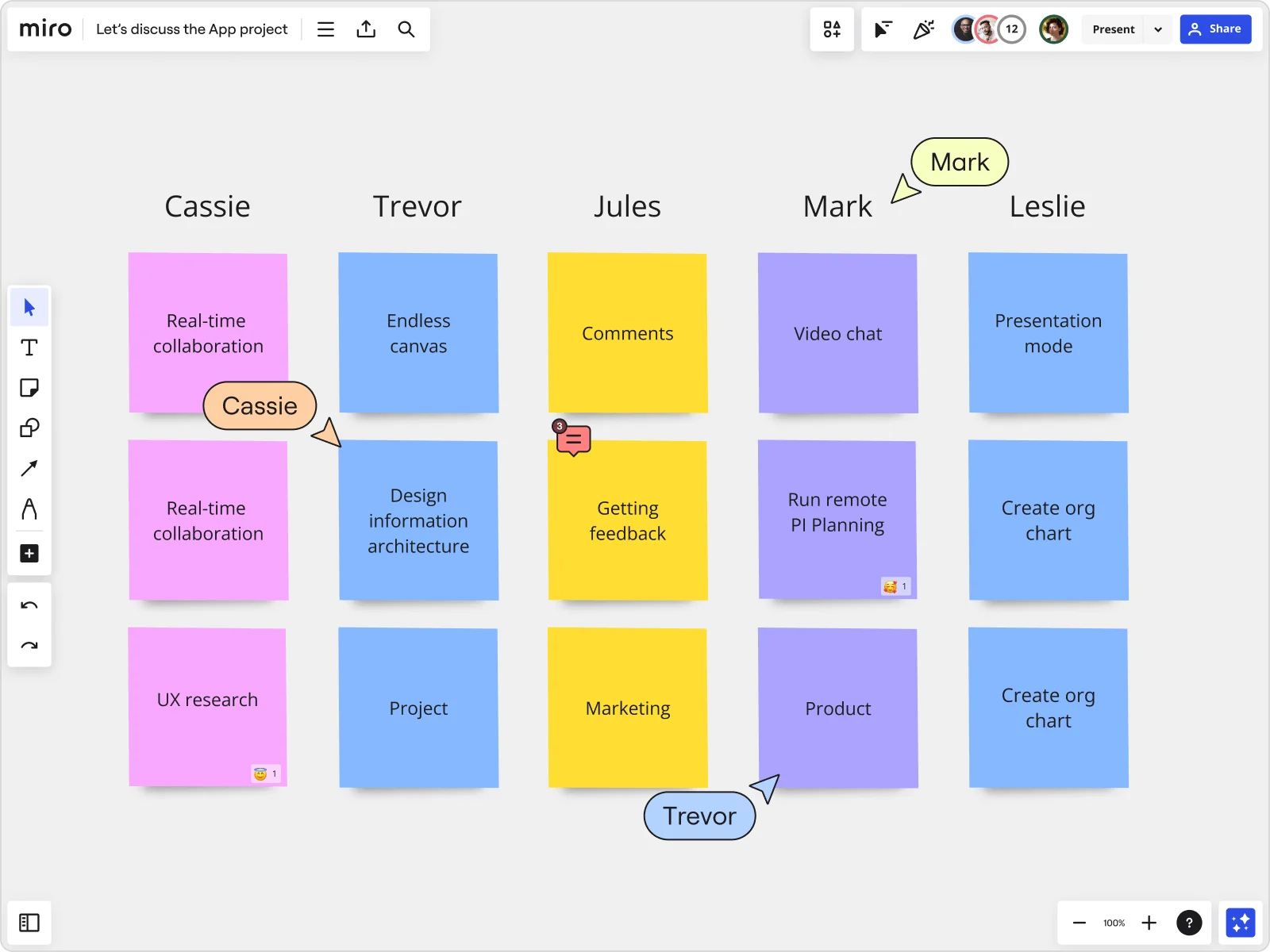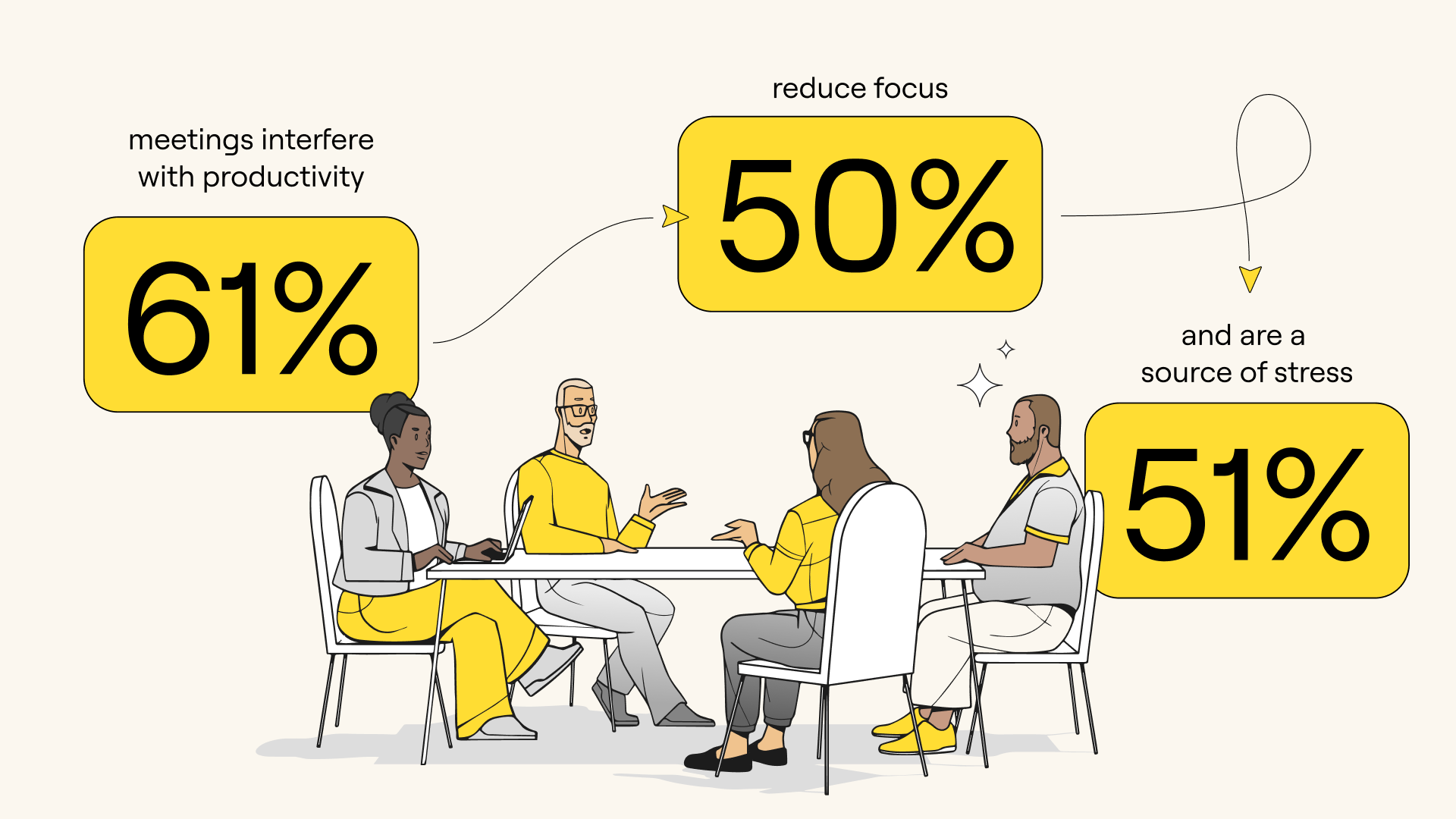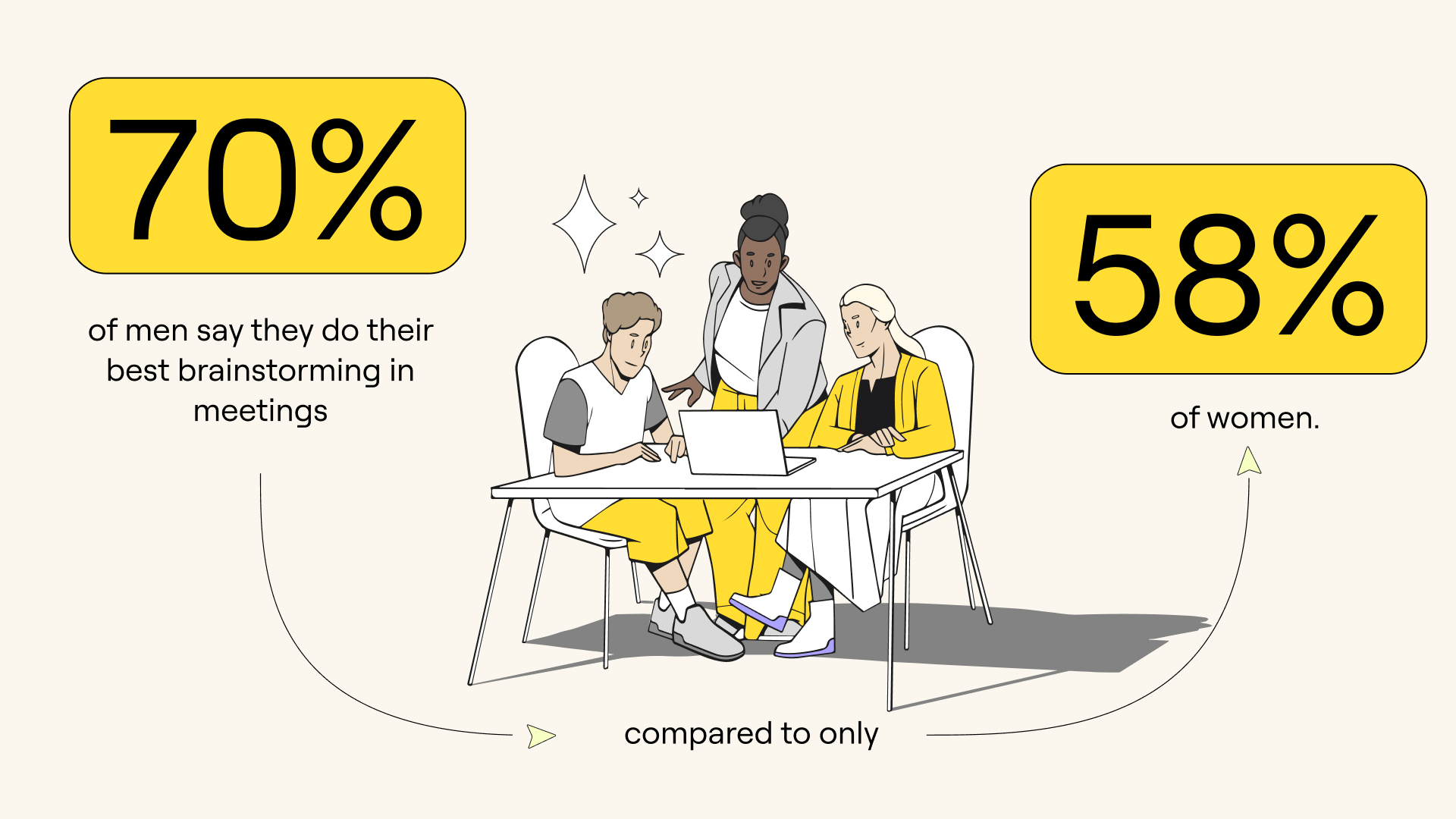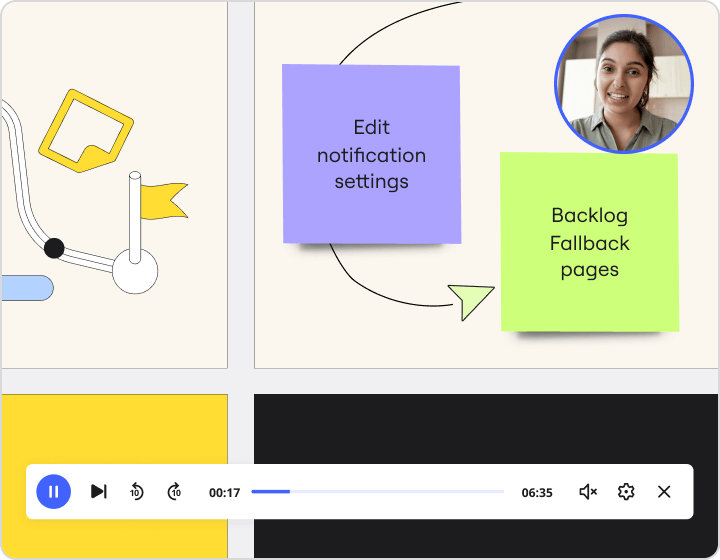A windowless conference room with a dozen people elbow to elbow isn’t the best environment for innovation to thrive. Yet, that’s often where we expect productive work to take place.
Many of the best thinkers work most efficiently in deep focus mode, but our modern work culture doesn’t protect that time and space. Instead, in the name of connectivity and 20th-century work habits, we expect great breakthroughs from meeting rooms or work-from-home setups where chat pings chip away at our concentration.
That’s where async work can be useful. At Miro, we surveyed 2,228 knowledge workers in the U.S. to find out how people actually work best — and we discovered that async can unlock the door for better collaboration and innovation. Below, we’ll explore the data and share what we’ve learned by helping companies across the globe implement async work.
What is async (or asynchronous) work?
Asynchronous work, informally known as async, is when team members collaborate on the same project at different times. Email is a classic example. Let’s say that you sent a coworker an email at 11am with a question. Your coworker might read and respond to the email at 3pm. You solve the problem without ever working in the same room or at the same time.
Synchronous work, on the other hand, takes place in real time. This could be a live brainstorming session, a video call, or an in-person meeting. It can also take the form of expecting an immediate response when you send a chat to a coworker.
The difference here isn’t whether the collaboration is virtual or in-person, but whether the work is immediate or staggered.
Examples of async collaboration
- Email without the expectation of an immediate response
- Sharing a presentation or report with a recorded introduction video
- Editing a document or sharing ideas with user comments
- Brainstorming and organizing ideas on a shared board

How async work fuels innovation
Async work has many benefits, from reducing burnout to eliminating unnecessary meetings.
86% of workers we surveyed said they want to keep or increase their levels of asynchronous communication. But that isn’t just because it’s convenient — it frees them up to do better work.
1: Accommodates multiple working styles and rhythms
Ideally, organizations should evaluate workers by their output, not the hours they punch on a clock. No two people work exactly alike, and we wouldn’t expect a software engineer to follow the same work rhythms as a marketing strategist. When we force employees into rigid working structures with limited focus time, we hamper creativity and put them on the fast track to burnout. Sixty-one percent of workers we surveyed said that async work reduces their level of burnout.
Rather than expecting workers to respond to a constant stream of chats and emails, it’s better to give them the freedom to batch similar tasks. For example, they could check emails three times a day and spend 20 minutes responding to messages. Task batching reduces context switching — when someone must mentally switch between topics — breaking their thought process and causing them to backtrack.

One notable barrier blocking workers from leaning into their best working rhythms is meetings. Of those we surveyed, 40% say they attend unnecessary meetings at least weekly. While meetings have their place, employees say that they interfere with productivity (61%), reduce focus (50%), and are a source of stress (51%). Reducing synchronous meetings is also more inclusive for workers who need flexibility, like caregivers and those with chronic health challenges.
2: Facilitates better feedback and iterations
Iterating is an important part of innovation. Thoughtful, detailed feedback is critical for successful iteration. If you’ve ever been asked to react to an idea or a proposal thrown at you in a meeting, it’s likely your feedback wasn’t as helpful or articulate as it could have been.
We found that giving individualized feedback is the number-one task that knowledge workers prefer to do async (60%), followed by conducting retrospectives or lookbacks (55%). This could be because we have more time for reflection. It could also be because we feel more comfortable sharing ideas and criticism when we aren’t face to face.
Async feedback structures can establish psychological safety, which Google found was the most common feature of high-performing teams.
In our survey, 66% agreed they feel more confident sharing ideas with their managers asynchronously. In an async environment, workers feel a stronger sense of safety sharing new ideas or raising concerns about bad ones. This lets teams iterate better and hone their best ideas.
3: Enables diversity and global perspectives
Many studies show that diverse perspectives lead to better innovation. A 2023 McKinsey study found that companies with the highest concentrations of women and ethnic representation in leadership outperform the lowest quartile by 39%. Diverse teams cause a positive ripple effect across the organization, from community to talent retention to environmental impact.
For example:
- Async work facilitates diversity in organizations by first making it easier for diverse groups to participate in the workforce at the highest levels.
- Parents can work around family commitments by flexing their work day.
- Workers in different time zones, countries, or rural areas can collaborate without being left out.
- Individuals with disabilities can participate in the workforce with the working schedule and accommodations that they need.
Async also facilitates inclusion. Not everyone thrives or feels comfortable sharing ideas in synchronous meetings. While some of this is attributable to personality, it’s also an inclusion issue.
In a study by Catalyst, 45% of women business leaders said they find it difficult to speak up on video calls. The same women said they often felt overlooked in video calls.
Research shows that women keep their speaking time concise because they don’t want to take up more time and space than necessary. When they speak up less, they’re seen as less influential. And when they do speak, they’re more likely to be interrupted or perceived as emotional.

Miro’s research correlates with this phenomenon. We found that while most men say they feel engaged (79%) during meetings, just 70% of women say the same. Just 58% of women say they do their best brainstorming in meetings, compared with 70% of men.
Integrating async work patterns into your culture can create a more inclusive — and therefore high-performing — environment.
How to implement a successful async strategy
For all the benefits of async collaboration, it needs to be implemented the right way. When introducing async to your company, be careful to build a culture of clear communication and expectations around async work. There are also a few traps you should avoid.
1. Find the right balance of synchronous and async collaboration
Meetings and synchronous work still have a function in the modern workplace. Live communication isn’t going anywhere, but we can make it so much more effective with a blended approach.
For instance, you can use a tool like Miro’s Talktrack to share information before a meeting. That way, you can use the synchronous time for questions, dialogue, and thoughtful feedback. You can also share notes and a recording after a meeting, to allow those who couldn’t attend to participate and attribute each person’s contributions and action points.

Synchronous work is better for asking clarifying questions and social connection time, like meeting new team members.
Synchronous work is better suited for kicking off new projects (65%), introductions with new team members (61%), and solving hard technical problems (60%).
Finding the right balance of synchronous and async approaches creates the best working environment and maximizes your employees’ time.
2. Build a culture that prioritizes productivity, not connectivity
When async work is done poorly, it leads to an “always on” mentality when workers feel they need to stay connected and respond to messages at all hours. The opposite should be true. Give your team clarity about when they are expected to respond and model healthy boundaries and working hours.
Communicate which channels they should use for each type of communication. Anti-Agency Group shares a great example of this with its house rules on priorities and working hours. Many workers, but especially Gen Z workers entering the workforce, can benefit from a written version of unwritten etiquette that evolves with technology.
3. Allow for individual interpretation
Last, be careful to avoid a prescriptive approach to async work. Instead, let teams and people individualize their approach to when and how they do their best work.
Don’t assume that because an employee falls into a certain gender, age, or lifestyle category, they will want to work a certain way. Open the door to dialogue and be prepared to dismantle your assumptions and ingrained habits. When you do, you’ll be surprised at how much you can learn and how much you can pivot for better ideas, breakthroughs, and innovations.




